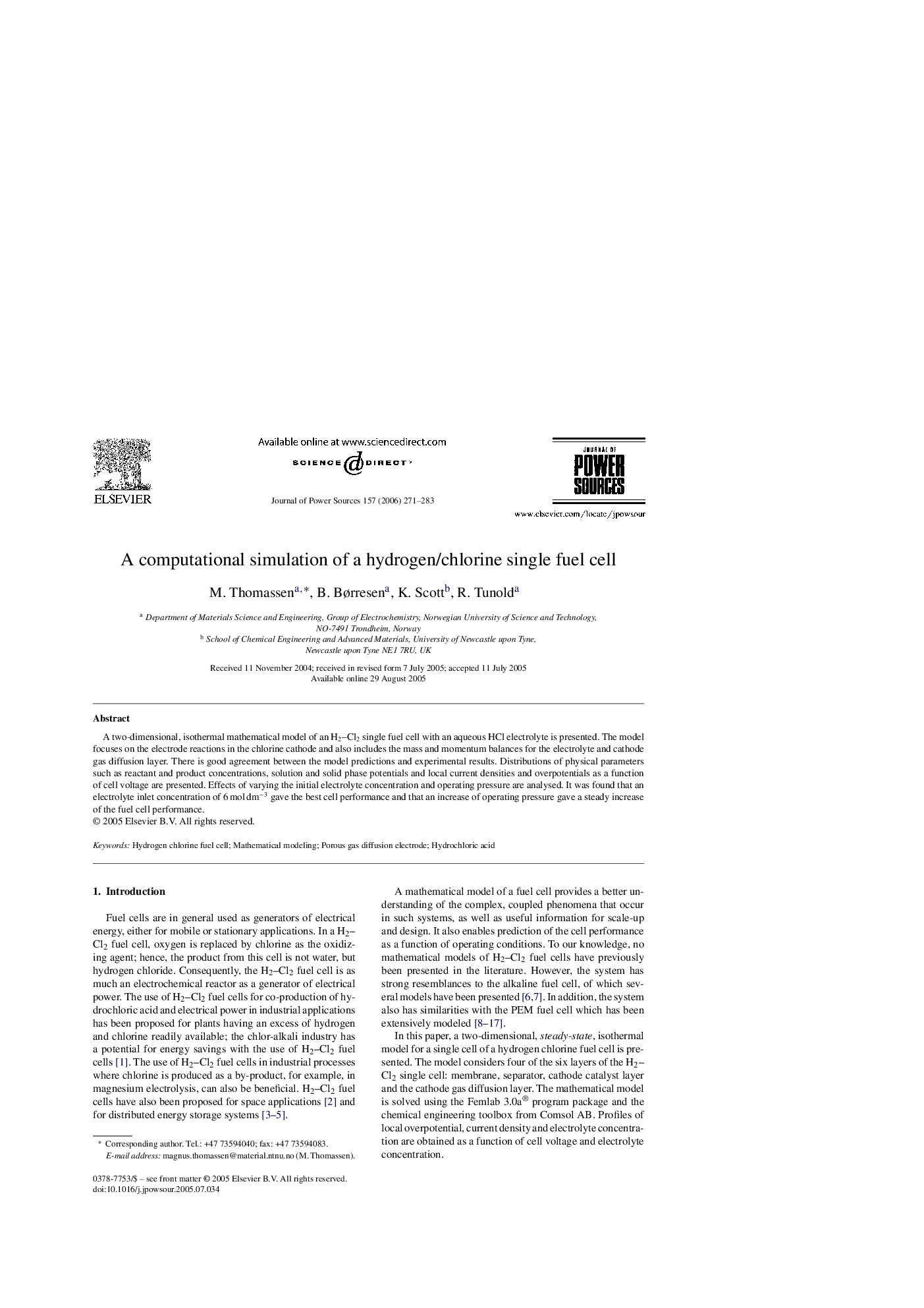| Article ID | Journal | Published Year | Pages | File Type |
|---|---|---|---|---|
| 1292672 | Journal of Power Sources | 2006 | 13 Pages |
A two-dimensional, isothermal mathematical model of an H2–Cl2 single fuel cell with an aqueous HCl electrolyte is presented. The model focuses on the electrode reactions in the chlorine cathode and also includes the mass and momentum balances for the electrolyte and cathode gas diffusion layer. There is good agreement between the model predictions and experimental results. Distributions of physical parameters such as reactant and product concentrations, solution and solid phase potentials and local current densities and overpotentials as a function of cell voltage are presented. Effects of varying the initial electrolyte concentration and operating pressure are analysed. It was found that an electrolyte inlet concentration of 6 mol dm−3 gave the best cell performance and that an increase of operating pressure gave a steady increase of the fuel cell performance.
